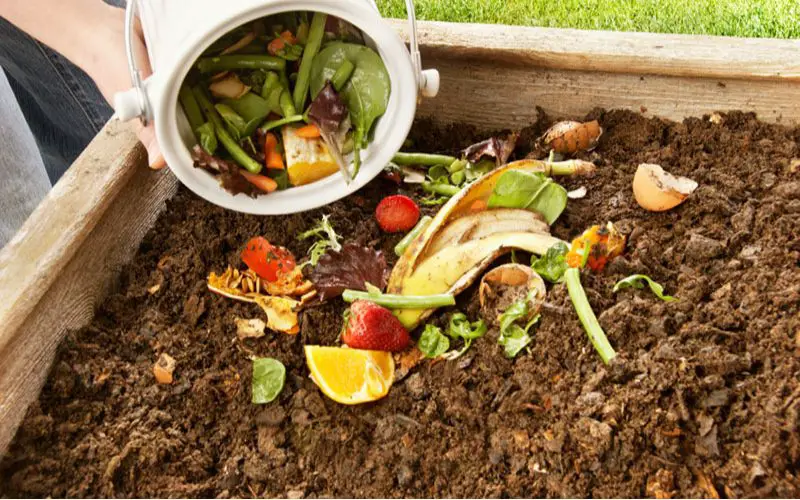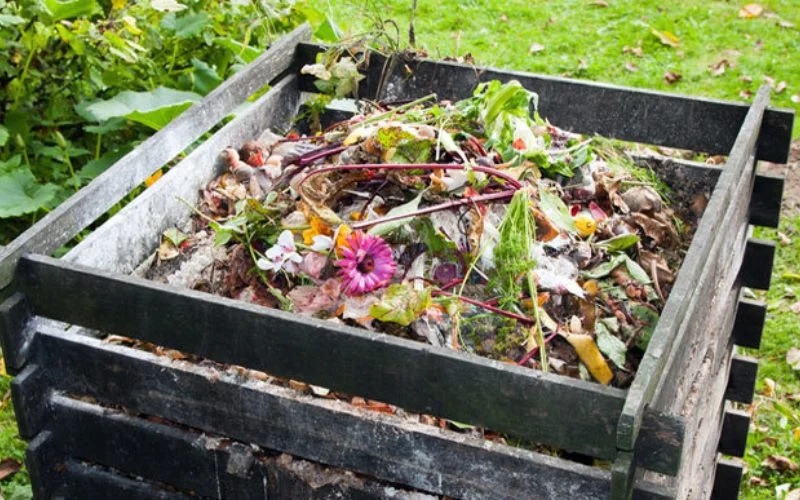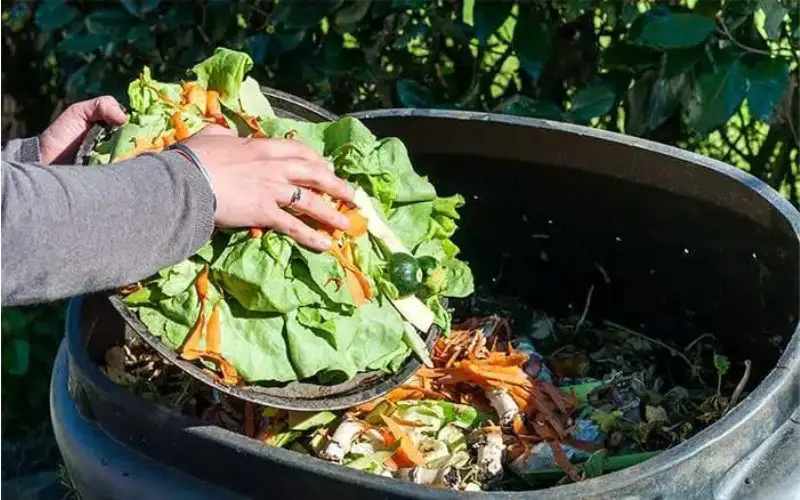As a newbie in composting, you might be worried about where to keep your compost bin – should it be in the open sun or the shade? Your worry is not unfounded because many would argue that you need the sun’s heat to speed up the composting process, while others will tell you that leaving your compost in the sun can dry it out. The truth is that they are both right.
The reality is that for compost to form, it goes through many processes both, meaning that most backyard composting will benefit from a bit of sun and shade at different times. Knowing when your compost needs sun or shade is therefore very crucial.
Read also: Composting Pine Needles and Cones (Fastest Method)
Factors That Are Necessary For Successful Compost

Composting is an age-old process of converting waste into nutrient-rich material that fertilizes the soil for optimum plant growth.
One aptly said, “Composting is a waste disposal method through which farmers turn garbage into “black gold.” The benefits of compost abound, especially as it is an environmentally friendly way of disposing of organic matter that would otherwise go into landfills or cause land pollution.
The success of your composting depends on many factors, but 5 of them are crucial. Your ability to control these factors can be the difference between being successful in the process and not. Here are the five success factors for making compost:
Compost Materials And Nutrient Balance
Composting of organic material is not arbitrary. It needs a balance of 2 types of compost materials, usually called “green” organic materials and “brown” organic materials.
When we say “Green” organic material, we refer to organic matter with a large amount of nitrogen. Examples include grass clippings, food scraps, and manure. On the other hand, “Brown” organic materials are carbon-rich materials that can be composted.
Examples include dry leaves, wood chips, and branches. Getting the right nutrient mix in your compost pile requires experience and patience.
The ideal carbon-to-nitrogen ratio (which is depicted as the C/N ratio or C: N) for composting is generally considered around 30:1 or 30 parts carbon for each nitrogen part by weight.
If the C: N ratio is too high, in which case there is excess carbon, the decomposition process slows down, and if the C: N ratio is too low, meaning there is excess nitrogen, you will end up with a stinky pile.
The Particle Size Of The Materials To Be Composted
The higher the surface area of your compost ingredients, the faster the compost will form. Grinding, chipping, and shredding your compost materials increases the surface area microorganisms can feed.
Another advantage of small particle-sized materials is that they make the compost homogeneous and improve pile insulation to help maintain the ideal temperatures of the compost pile.
While smaller particle in composting is good, the too tiny particle has the disadvantage that they might prevent air from flowing freely through the pile. So your best bet is to keep your compost ingredients a manageable size.
The Amount Of Moisture In The Compost Pile
The workers in the composting process are the microorganisms living in the compost pile. These microbes which convert this ordinary garbage into compost need enough moisture to survive, and this is because, like in all living things, water is vital in transporting substances within the compost pile and makes the nutrients in organic material accessible to the microbes.
Moisture in a compost pile can come from the organic material containing moisture from rainfall or intentional watering. Less moisture in the compost pile can positively affect the microbial activities there.
The Oxygen Flow In The Compost Pile
Remember that many microorganisms in the compost pile that decompose this organic matter need oxygen. There are different ways of aerating the soil, including turning the pile, placing the pile on a series of pipes, or bulking agents such as wood chips and shredded newspapers.
An adequate amount of oxygen in the compost pile allows decomposition to occur faster. You must, however, be careful not to aerate the compost pile too much because it can dry out the compost pile and slow down the composting process.
Optimum Temperature
In the same way, we need an ideal temperature range to function, as is the case with the microorganisms in the compost heap. Certain temperatures make the composting process go faster and destroy pathogens and weed seeds in the compost pile.
If the temperature of the pile does not increase, what happens is that the pile begins to rot due to anaerobic microbes that begin to act. People often prefer to keep their compost under the sun to ensure it doesn’t lose heat.
Should A Composter Be In Sun Or Shade?

The solution to this question depends on the composting you are going for. There are two types of compost:
Hot Compost
Cold Compost
These two types of compost are as opposite in name as their processes are different. Let’s have at each of them:
Hot Composting
It is the aerobic process of making compost where microorganisms that need oxygen to decompose compost materials act on compost materials to decompose them.
This composting method controls the composting conditions, which increases the rate at which organic wastes decay.
In the proper condition, oxygen-needing microorganisms break down the compost materials, creating heat in the system. The temperatures in a pile then rise to sometimes as hot as 160°F (71°C).
Condition For A Successful Hot Compost
Six necessary conditions must be met for successful hot composting:
1. There must be a balance of nitrogen-rich greens and carbon-rich browns in the compost pile. Start the compost with an equal ratio of green and brown compost materials, then progressively increase the brown compost material until it is a ratio of 3:2 with the green.
2. Ensure the compost materials are about half an inch to 1.5 inches. It is to give the microbes more surface area to act on.
3. The compost should be piled at least 3 feet high, 3 feet long, and 3 feet wide.
4. The moisture Keep level of the pile should be between 40 and 60%. If you squeeze the compost, it should feel like a sponge that’s been wrung out.
5. The temperature should be about 130 to 140°F (54-60°C)
6. Aerate the pile regularly by turning it.
Benefits Of Hot Compost
Here are some of the most noticeable benefits of hot compost:
1. It yields compost fast. Some claim that it can convert some garbage into compost in less than 30 days (don’t hold us to this, it’s not yet verified)
2. It destroys both weeds and their seeds, including pathogens.
3. Hot compost has a pleasant, earthy smell compared to cold compost, which stinks.
Disadvantages Of Hot Composting
1. It is high maintenance because there is lots of work, like monitoring and turning the compost pile.
2. The compost pile must be big enough to generate heat.
3. You can’t add new organic wastes to a heated-up hot compost as this will slow the decay.
Cold Composting
If I call this the “lazy man” composting method, I will not be entirely wrong because this simple composting method needs minimal involvement from you. The real work is done almost entirely by microorganisms that don’t need oxygen to survive. The anaerobic process of fermentation carried out by some microorganisms occurs without oxygen.
For cold composting, there are no rules to follow. All you need to do is throw organic wastes into a pile as you make them, sprinkle water on the pile if you notice it is drying out, and then leave it to break down.
Benefits Of Cold Compost
1. It is a method of composting that requires little maintenance.
2. Make the compost pile as small or high as you want.
3. You can add new organic wastes to the pile as you make them.
Disadvantages Of Cold Composting
1. It is a slow method that can take up to a year or 2 to yield compost.
2. Cold composting doesn’t kill pathogens, weeds, or their seeds,
3. This kind of composting smells terrible.
4. This method of composting can attract pests.
The Verdict
You can keep your compost in the sun or shade, depending on the compost method you are adopting.
For hot compost, you can keep your compost in the sun since you want the compost to heat up, while you can keep cold compost under shade.
Conclusion
Composting is now becoming a craze for gardeners because it allows people to turn their waste into something useful and because it is eco-friendly and psychologically rewarding. You may also like Can Paper Towels Be Composted? (Crucial Notes)
Helpful Links:
- When to Apply Ironite to Shrubs?
- What Pots Are Good For Succulents?
- Top 3 Best Bagged Soil For Vegetable Garden
- How to Make Homemade Compost Catalyst
- What is a Good Source of Carbon for Compost
You can keep your composter in the bin if you are adopting the hot compost method, but leaving your compost bin in the shade is your best option for the cold compost method.
Kindly reach out to people by sharing this post on social media.

